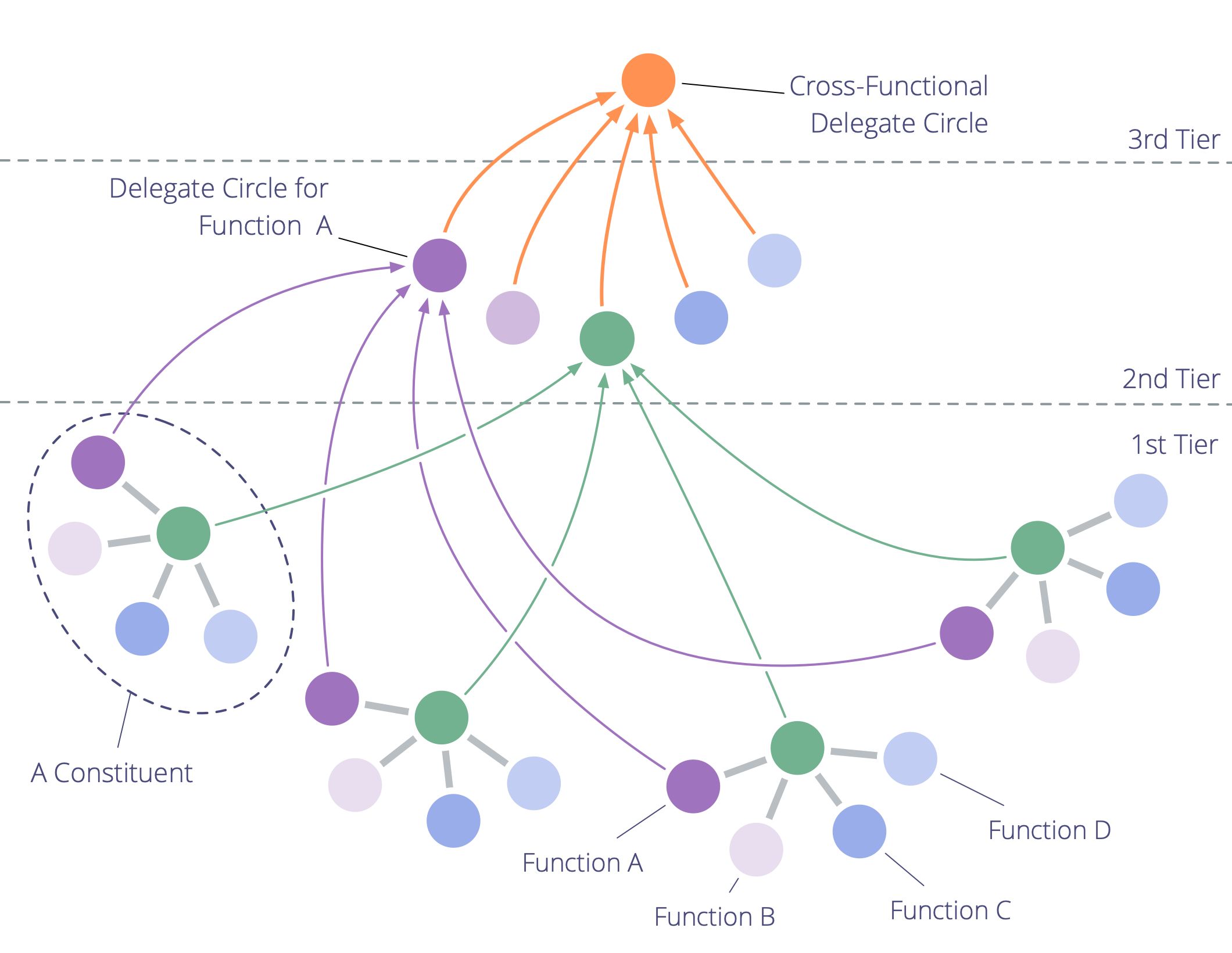Fractal Organization
Multiple constituents (organizations or projects) with a common (or similar) primary driver and structure can share learning across functional domains, align action and make high level governance decisions (e.g. overall strategy).
Creating a fractal organization can enable a large network to rapidly respond to changing contexts.
If necessary, the pattern can be repeated to connect multiple fractal organizations into one.

Prerequisites
A fractal organization can be formed either by multiple in(ter-)dependent organizations which share a common (primary) driver, or by multiple branches, departments, or projects within a larger organization.
These constituents (i.e. organizations, branches, departments or projects) need to share at least some — and typically most — functional domains (e.g. accounting, product management, or development).
Tiers
A fractal organization has at least three tiers:
- first tier: the constituents (i.e. organizations, branches, departments or projects)
- second tier: function-specific delegate circles to share learning and to make and evolve agreements on behalf of function-specific domains
- third tier: a cross-functional delegate circle to make and evolve agreements in response to drivers affecting the overall body of constituents
Forming a Fractal Organization
- Forming the second tier: In each constituent, the members of each common (and significant) functional domain, decide who of them will represent them in a function-specific delegate circle, where they share knowledge and learning, and contribute toward making and evolving agreements. Representatives are selected for a limited term (after which a new selection is made).
- Forming the third tier: second-tier delegate circles each select a delegate to form the cross-functional delegate circle.
Impact on the organization(s)
Each constituent:
- gains access to a wide array of experience, wisdom and skills to increase effectiveness and innovation.
- can share resources, infrastructure and experience with other constituents according to capacity and need
The second and third tier:
- can test decisions simultaneously across multiple instances of a function-specific domain, providing extensive feedback and rapid learning
- organize, align and steer the whole system while preserving autonomy and agency of the individual constituents